Anthurium is a special and very beautiful flower that will delight you regardless of the season. It blooms in beautiful colors of red, pink, white and purple with a waxy surface.
However, anthurium is a plant that requires careful maintenance, like any other indoor flower. The most common problem is anthurium diseases associated with its leaves. How they manifest themselves and how to treat them, we will consider below.
Content
What does anthurium look like: photo
In the photo in our gallery you can see what this flower looks like. He's very handsome, belongs to evergreens... Anthurium comes from the tropics, and its flowers have a special bizarre shape, which is why it is often called the flamingo flower.
Anthurium is very popular among amateur and professional flower growers. It looks unusual in itself, and it can also be used in different ways in different flower arrangements and bouquets. If you wish, you can find a photo of examples of such combinations.
Another feature of the plant is the ability to stand cut in a vase for several weeks in a row.
However, there are a number of anthurium diseases that affect the leaves of the plant. They give owners a lot of trouble. Most growers believe that they are better prevented than treated.
Causes of yellow leaves
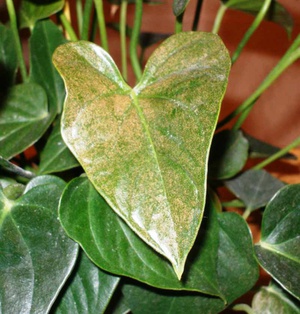 The key to the beautiful bloom of anthurium is proper care... If you neglect the rules and advice on this matter, then the leaves of the plant will turn yellow. This is very bad, since such a phenomenon is not typical for anthurium.
The key to the beautiful bloom of anthurium is proper care... If you neglect the rules and advice on this matter, then the leaves of the plant will turn yellow. This is very bad, since such a phenomenon is not typical for anthurium.
Leaves turn yellow for reasons such as:
- problems with leaving;
- chlorosis;
- sunburn;
- freezing of a flower;
- other diseases.
If you notice that the leaves of the anthurium have begun to turn yellow, then pay attention to how you water it, perhaps there is not enough wateror it is too tough. It may also be due to insufficient fertilization or lack of sunlight. As a treatment, you just need to revise the watering schedule and rearrange the pot.
Diseases with yellowness and treatment
If the leaves of anthurium turn yellow due to a disease, then you need to identify it and begin the required treatment. So, if we are talking about chlorosis, then you need to spray the plant with iron chelate or algae extract. With this disease, the normal color of the veins remains, and the leaf turns yellow. Also, the anthurium will need more light.
Also, the leaves may turn yellow. due to sunburn... That is why you cannot overdo it in terms of the sun. A characteristic symptom is yellow or brown spots on the leaves, they themselves then begin to curl and eventually dry out. The best treatment in this case would be to rearrange the flower for a while in a darkened place.
You can not put anthurium in a draft and use very cold water for irrigation. In this case, it may freeze, which will cause small white spots to appear on the leaves.In such cases, they need to be transferred to warmer places.
In addition, yellow leaves can signal the presence of fungi. We will talk about them a little later.
Why do anthurium leaves turn black?
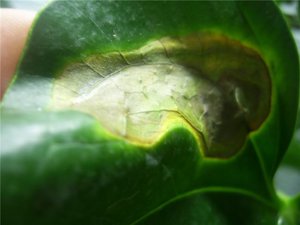 Anthurium leaves can change color due to improper care. Brown stains may appear due to abundant watering. It is better to know the measure in this matter, otherwise the plant will die.
Anthurium leaves can change color due to improper care. Brown stains may appear due to abundant watering. It is better to know the measure in this matter, otherwise the plant will die.
Black and sluggish leaves are a sign of improper plant transplant. It is best to use a bromeliad or orchid substrate that will allow the flower to grow fully. It includes soils such as:
- coniferous;
- sod;
- sheet.
It also contains a sand-based mixture.
In addition to unsuitable soil, leaf discoloration during transplantation is caused by root damage, there is always a risk of damaging it, so read carefully in advance how to do this.
Sometimes diseases of the root system and anthurium flowers occur due to strong temperature changes. Brown heels and holes along the edges lead to the death of the plant, and there will simply be no time to heal. Therefore, it is better to take proper care of it to prevent this from happening.
What are anthurium leaves most often affected by?
All kinds of diseases can concern both indoor samples and garden ones. If they are improperly looked after or planted incorrectly, then their leaves can be affected by fungi and parasites. This is especially true for transplantation, here the risk is especially great.
Immediately remove a diseased plant from a healthy one, in order to avoid infection, if you have the following symptoms:
- specific spots;
- plaque on leaves;
- dryness on both leaves and trunks.
Treatment in this case should be started immediately. using special meansto save the flower.
The most common fungal diseases of anthurium are:
- sooty fungi;
- gray mold;
- soil mushrooms;
- rust;
- powdery mildew and rot.
Anthurium fungal diseases and their treatment
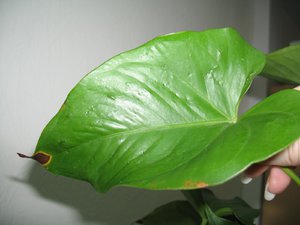 A disease such as rust mainly affects the stem and leaves. At the same time, brown spots of different sizes appear on them. Then the leaves can fall off entirely, and the plant will rot. This can happen if the air and soil are too dry... For treatment and prevention, wipe the plant with a Bordeaux mixture, and tear off and burn rusty leaves and shoots so that other plants do not get infected.
A disease such as rust mainly affects the stem and leaves. At the same time, brown spots of different sizes appear on them. Then the leaves can fall off entirely, and the plant will rot. This can happen if the air and soil are too dry... For treatment and prevention, wipe the plant with a Bordeaux mixture, and tear off and burn rusty leaves and shoots so that other plants do not get infected.
Sooty mushrooms most often appear on the sugary secretions of aphids. They infect leaves, stems and young shoots of anthurium. Due to this disease, the plant cannot produce more shoots and its reproduction stops. In this case, the plant must be treated by cutting off the affected areas and treating the entire flower with potash soap. It is this that will remove the plaque that has arisen.
Powdery mildew can be identified by white bloom, although it is divided into false and real. In this case, treatment in both cases occurs with the use of fungicidal preparations.
This disease appears due to the following factors:
- high humidity at high air temperatures;
- sudden changes in temperature;
- problems with leaving.
Soil mushrooms provoke rotting of the mountains, they can appear when a plant is transplanted into infected soil, as well as due to very abundant watering and poor drainage in pots. It is necessary to remove the affected parts of the anthurium in time and immediately treat the plant.
Gray mold is characterized by a gray tinge on leaves and flowers. It is characteristic of young and weakened plants and appears as a result of being kept in unventilated rooms, abundant watering, poor drainage and the fact that dry and dead parts were not removed in time.
Other common anthurium fungal diseases include:
- fusarium;
- gommosis;
- cescospore fungus.
The latter disease is not as dangerous as others, but it is strong spoils the appearance of the plant, and paints its leaves first in yellow and then in dark shades.
Treatment consists in treating anthurium with a fungicidal solution.
Parasitic diseases
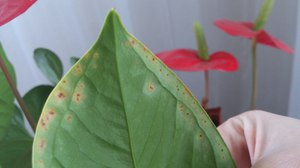 Another category of anthurium diseases is parasitic. Even those plants that are properly looked after are not insured from them. Parasites infect not only leaves, but also flowers, roots and stems of anthurium. The most dangerous parasites for a plant are:
Another category of anthurium diseases is parasitic. Even those plants that are properly looked after are not insured from them. Parasites infect not only leaves, but also flowers, roots and stems of anthurium. The most dangerous parasites for a plant are:
- thrips;
- aphid;
- scabbard.
It is very difficult to fight the shield, since armored bugs are not visible at the initial stage of the disease. Only with careful care can the disease be cured. Bugs can bring the plant to wilting and death, so if you notice them, you need to immediately apply insecticidal preparations and do mechanical cleaning of the plant.
Thrips can be identified by the black dots on the back of the leaves. They can appear regardless of the season, but they are especially active in spring and summer. For anthurium, both adults and larvae are dangerous. For the purpose of treatment, the flower is isolated from healthy ones and treated with an insecticidal solution. For prevention purposes, you should properly and regularly look after the plant and constantly ventilate the room where it is kept.
Enough dangerous and spider mite, when it is detected, you need to prepare for a long treatment process. The first sign of the disease is a thin cobweb that envelops the leaves, stems and flowers. Then they dry up and curl up.
The treatment will be as follows:
- we clean the anthurium from the web;
- we wipe the pot and the surface on which it stood;
- we wipe the plant with laundry soap.
Remember to keep your plant in the right conditions, temperature and humidity must be optimal for its existence. Tick may return if care is started.
Anthurium diseases are better, of course, to prevent than to cure after the fact. In addition to observing the conditions for keeping plants, you need to constantly inspect its leaves, flowers and stems for the appearance of spots and larvae on them, and also pay attention to the change in the shade of the leaves.
If you do everything correctly and carry out preventive measures, your anthurium will certainly delight you with its flowering.
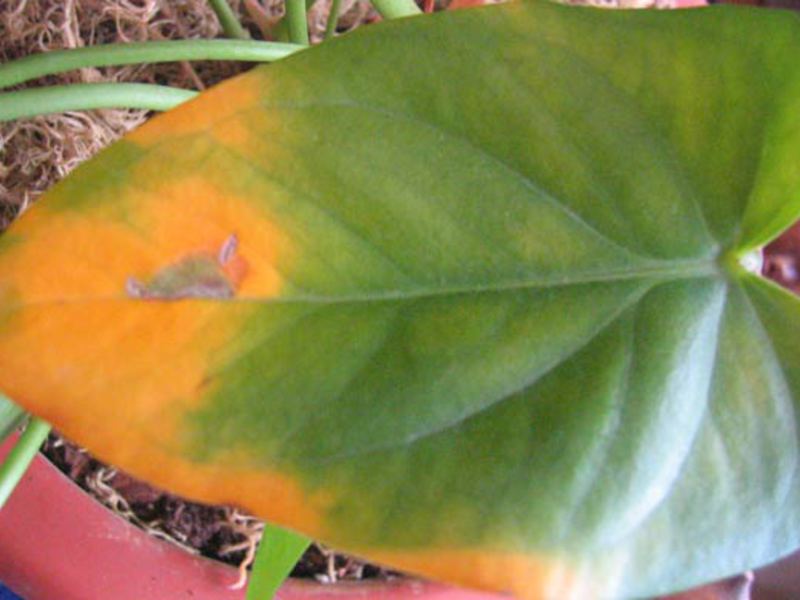
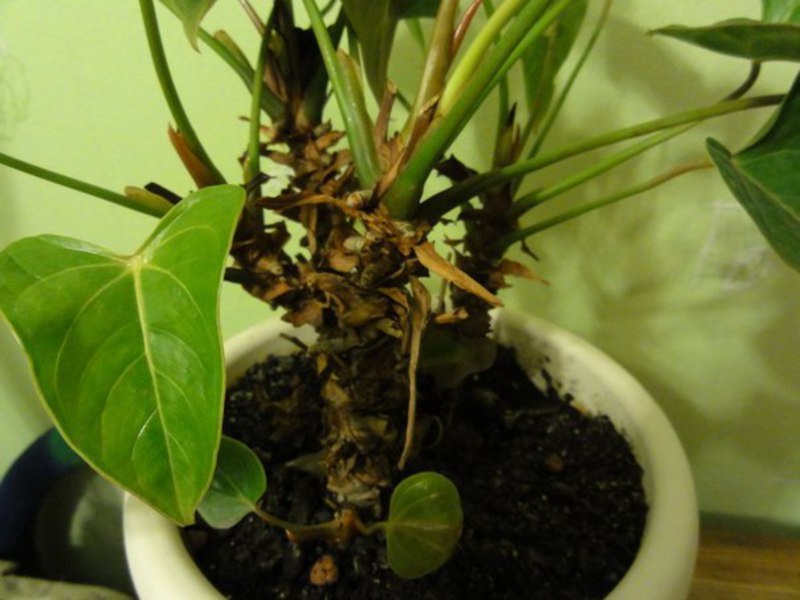

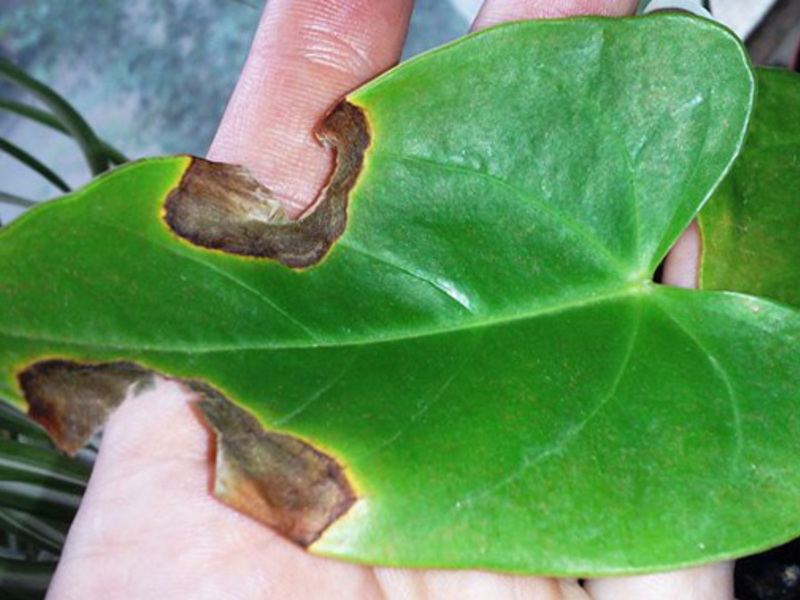

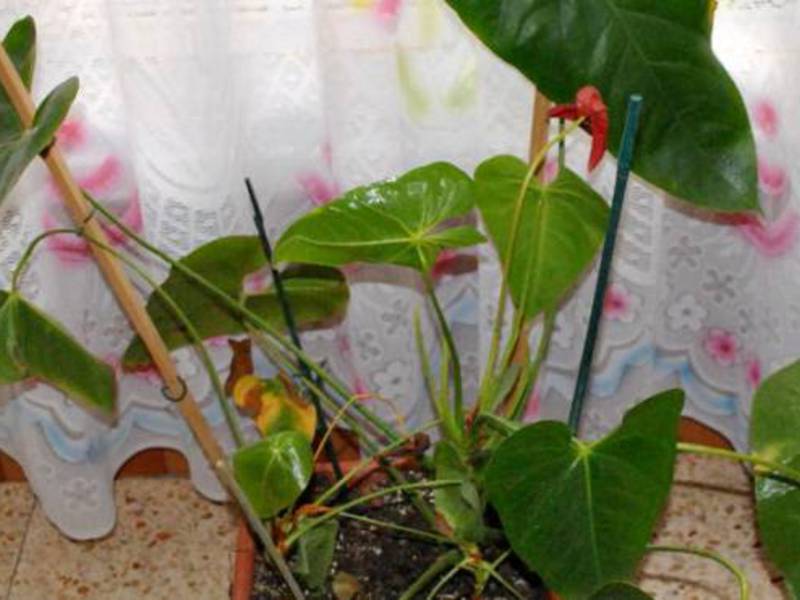
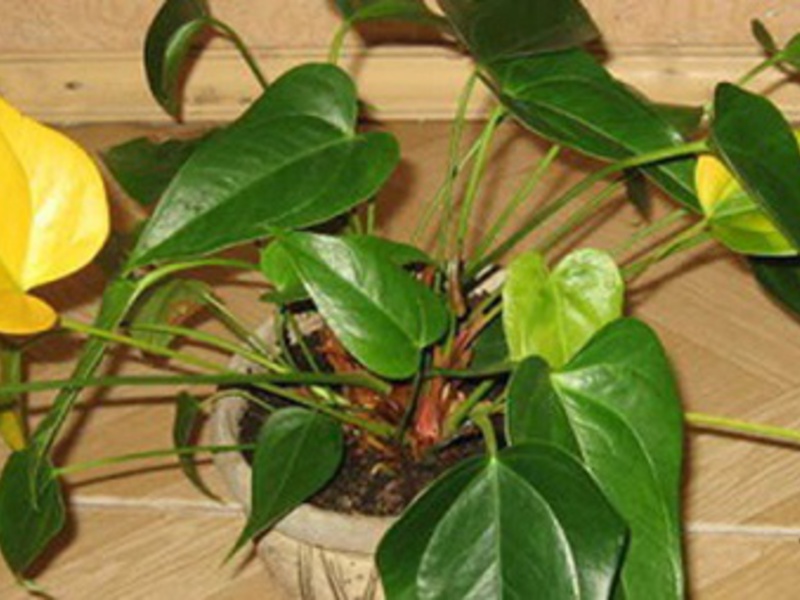
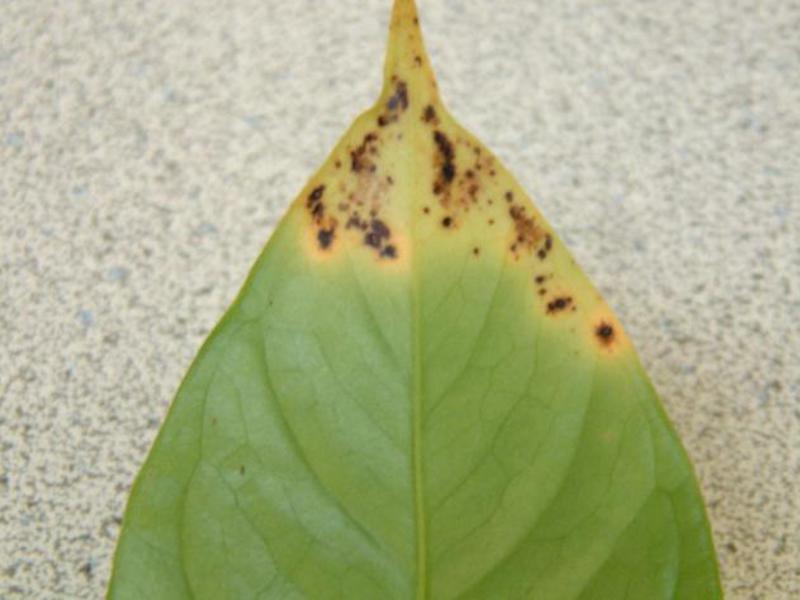
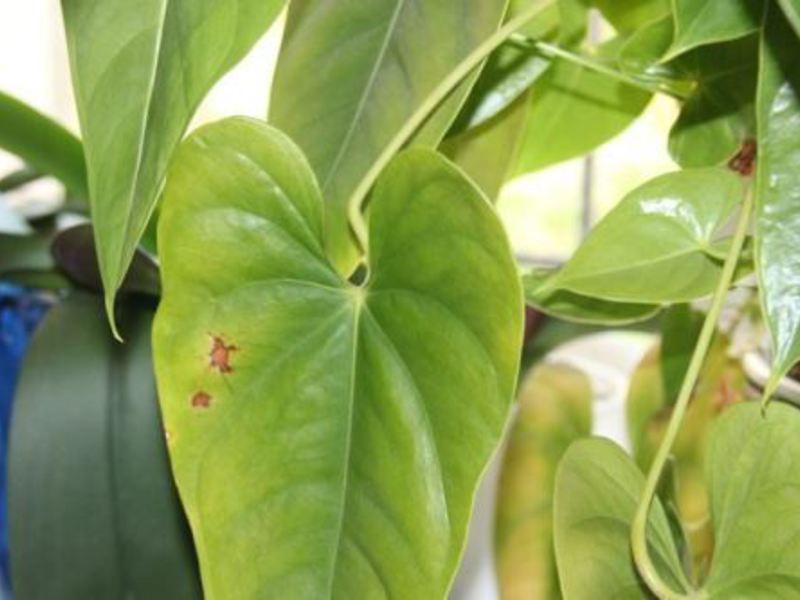

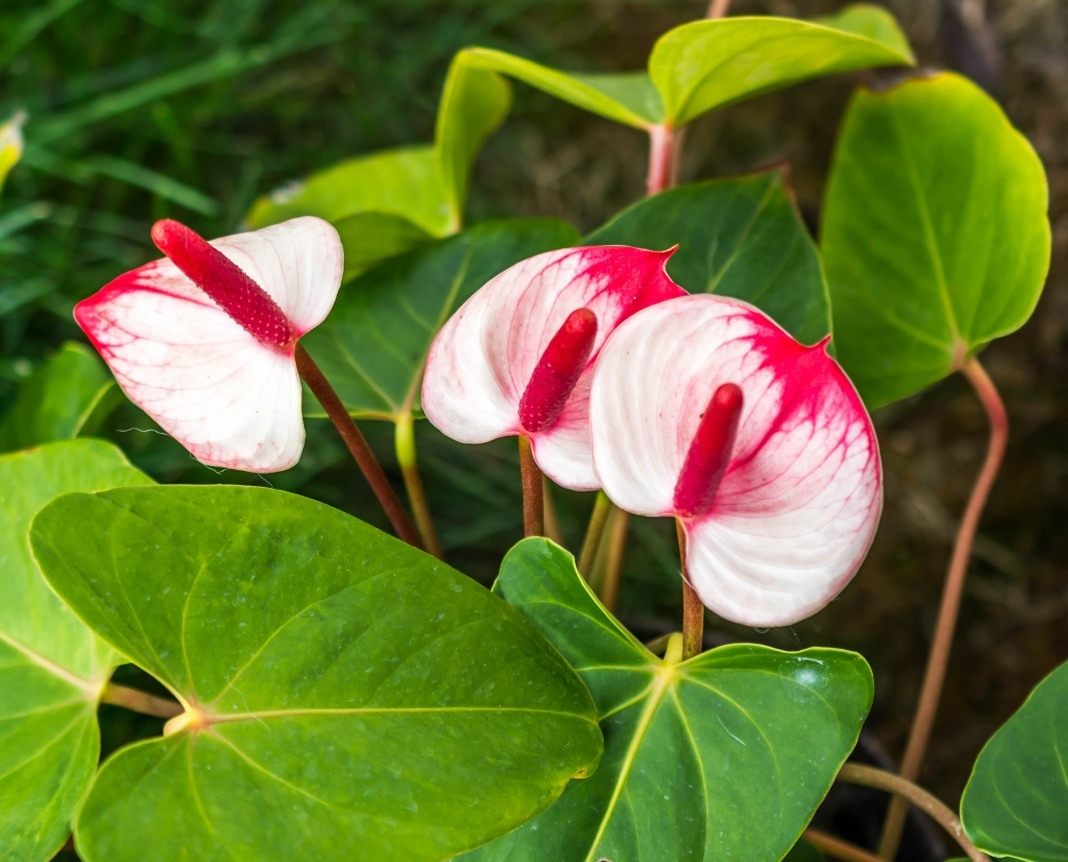
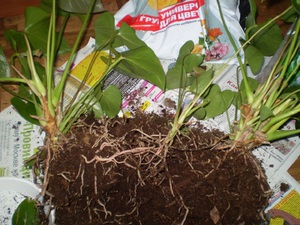
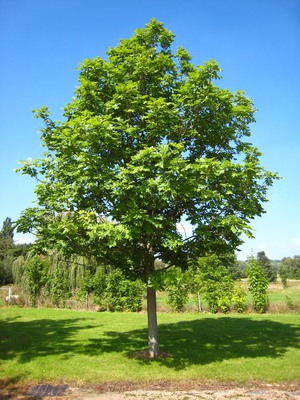
1 comment